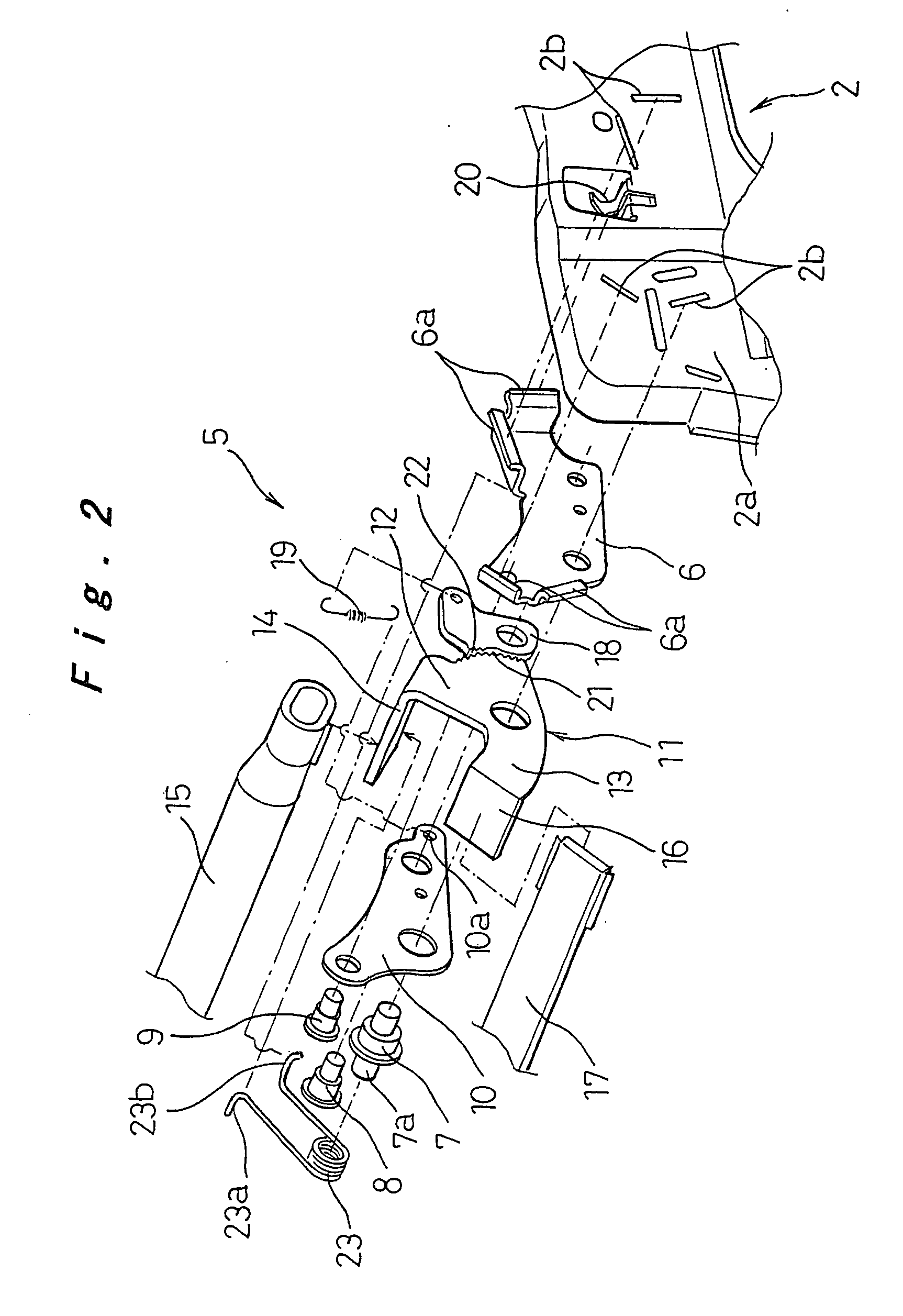Car seat
a seat and seat technology, applied in the field of car seats, can solve the problems the seat belts did not work effectively, and the effect of deteriorating the comfort of the seat, and achieve the effect of not being able to achieve the effect of preventing the passenger from moving forward, and being easy to catch
- Summary
- Abstract
- Description
- Claims
- Application Information
AI Technical Summary
Benefits of technology
Problems solved by technology
Method used
Image
Examples
Embodiment Construction
[0027] Preferred embodiments of the car seat of the present invention will be hereinafter described with reference to FIG. 1 to FIG. 10D.
[0028] A first embodiment of the present invention is described first with reference to FIG. 1 to FIG. 4. In FIG. 1 and FIG. 2, numeral 1 denotes a car seat cushion, and 2 denotes a steel plate frame part of the seat cushion 1, both sides of which are attached to upper rails of left and right seat rails (not shown). A cushion pad 3 made of, for example, urethane foam is mounted on this frame part 2, and is covered by an outer package material (not shown). A plurality of S springs 4 are stretched at the bottom of the frame part 2 across the side plates, spaced from each other in the front to back direction in the middle and at the rear part in the front to back direction of the vehicle, serving as support spring members for supporting the lower side of the cushion pad 3. In the front part between the side plates of the frame part 2 beneath the cush...
PUM
 Login to View More
Login to View More Abstract
Description
Claims
Application Information
 Login to View More
Login to View More - R&D
- Intellectual Property
- Life Sciences
- Materials
- Tech Scout
- Unparalleled Data Quality
- Higher Quality Content
- 60% Fewer Hallucinations
Browse by: Latest US Patents, China's latest patents, Technical Efficacy Thesaurus, Application Domain, Technology Topic, Popular Technical Reports.
© 2025 PatSnap. All rights reserved.Legal|Privacy policy|Modern Slavery Act Transparency Statement|Sitemap|About US| Contact US: help@patsnap.com



